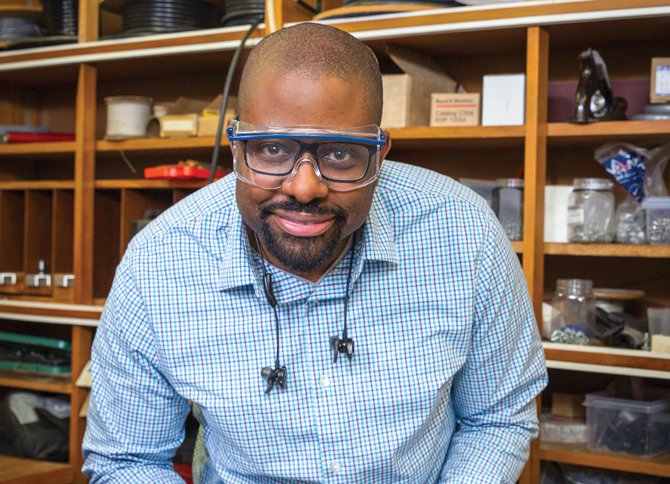26 Sep 2018
Kris Sebro MEngNZ moved to Hamilton from Trinidad and Tobago in January to pursue a Master’s degree in engineering at the University of Waikato. In addition to his studies, he’s inventing a personal flying device, which he has entered in the Boeing-backed GoFly competition. Kris hopes his machine will be available to the public in 2025. And while a lot of the plans are still secret, he lets EG in on some of the details.

Kris Sebro
Tell us a bit about your invention.
It’s a modular platform system aimed at revolutionising the personal drone flight and transport industry. While the prototype craft will be exposed, the completed model will be fully enclosed, with aircraft-grade aluminium and carbon fibre composite materials used for the main structure.
It’s designed to ferry a person and luggage for 60km, using vertical landing and take-off. The craft’s external height would be around 152cm and width is a maximum of 259cm. The passenger would be positioned in a lounging position for maximum comfort while in transit.
How much will it cost to buy?
Once mass produced, it should be about $20,000 to $30,000.
How does it work?
It will be intuitive to operate. Fly-by-wire technologies (meaning a semi-automatic, typically computer-regulated system for controlling aircraft flight) will mitigate dangerous pilot input and collision avoidance systems are incorporated to mitigate in-air and landing collisions. The safety systems ensure that in the event of full systems failure, the craft could land safely in an unpowered, unguided state.
What speed will your craft reach?
It will be able to exceed 100 knots.
Would people need a licence to operate your craft?
Although the craft will be able to fly autonomously, it is expected that the Civil Aviation Authority and general aviation governing legislation would require some sort of licensing and training for people using the personal flight system.
Where in the process are you?
The preliminary designs and theoretical models have been completed and we’re in a pre-seed phase for funding. We’re also working to secure a permanent space for detailed engineering design and prototype assembly and pursuing partnerships for the engineering, construction and long-term funding. I'm currently looking to expand the team with more engineers, corporate sponsors and other people interested in getting involved.
When do you work on the project?
Weekends are reserved for working on the project, as is any free/slow time not working on school projects. There’s a lot of work to be done and a strict timeline. Innovation is a funny thing – ideas strike you at any place and time so I always have a notepad to record any ideas that cross my mind.
Is this your first invention?
I have worked on a variety of concepts and innovations that stemmed from the InnoCentive and HeroX online platforms, websites that connect companies with technological challenges with innovators and inventors around the world. I have been successful (ie awarded financial compensation) for previous innovations, however due to confidentiality clauses I can’t talk about these. This is the largest and most demanding project that I’ve undertaken. Innovation is a funny thing – ideas strike you at any place and time so I always have a notepad to record any ideas that cross my mind.
Innovation is a funny thing – ideas strike you at any place and time so I always have a notepad to record any ideas that cross my mind.
When did you first become interested in the idea of personal flying machines?
I have always loved the idea of flying as a child (what kid doesn’t?) but I never pursued the idea due to the lack of venues available for the development, and the lack of technical and financial support available in the Caribbean.
Have you ever tried flying an aircraft?
I have experience with model aircrafts (home built) but not actual aircrafts.
Are there any specific advantages to inventing products in New Zealand?
New Zealand is a great place to innovate. The culture of approachability and friendliness lends to ease in networking and meeting key individuals who are willing to help or get involved with the project. The high level of expertise and passion for technology and innovation is evident through the rate of adoption of new technologies.




